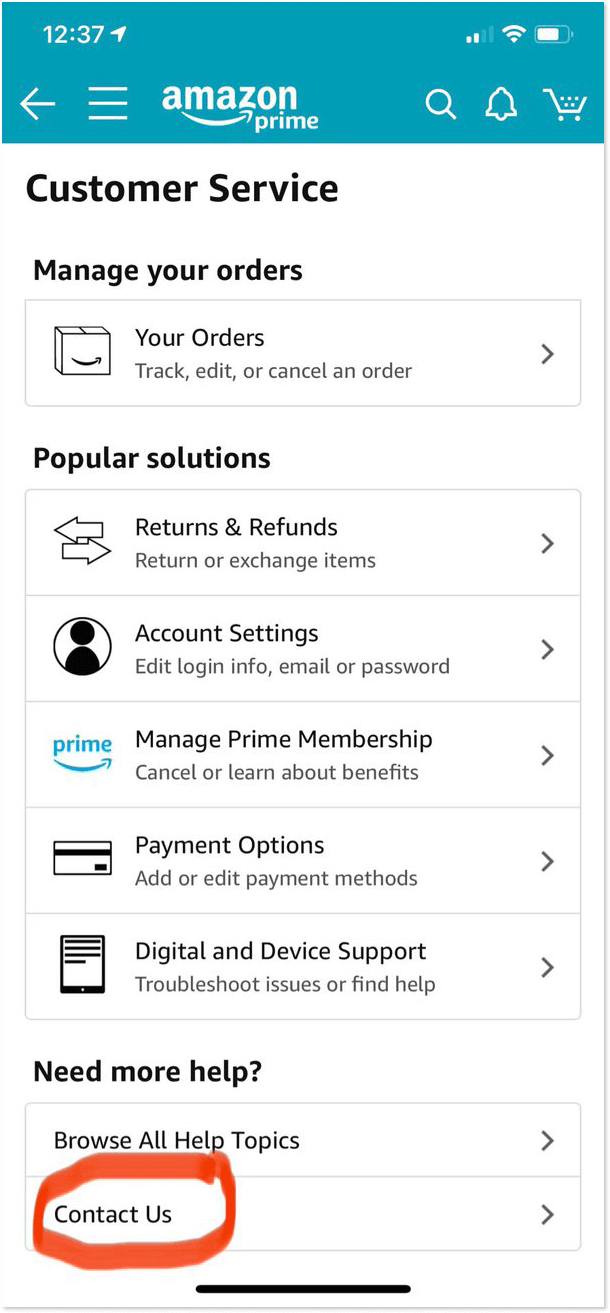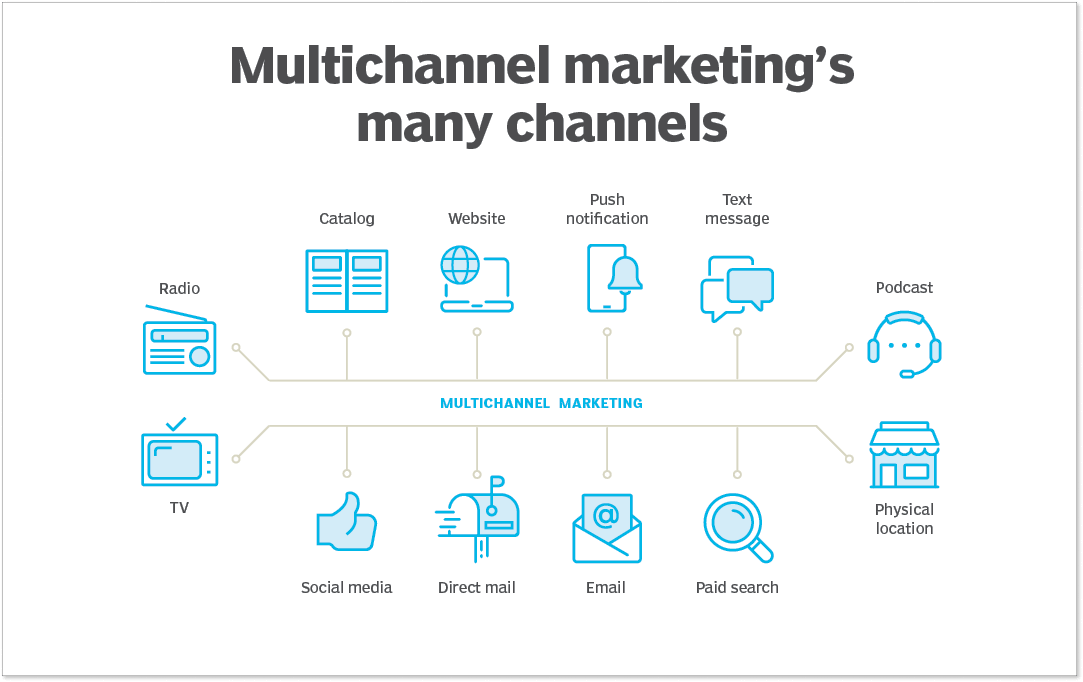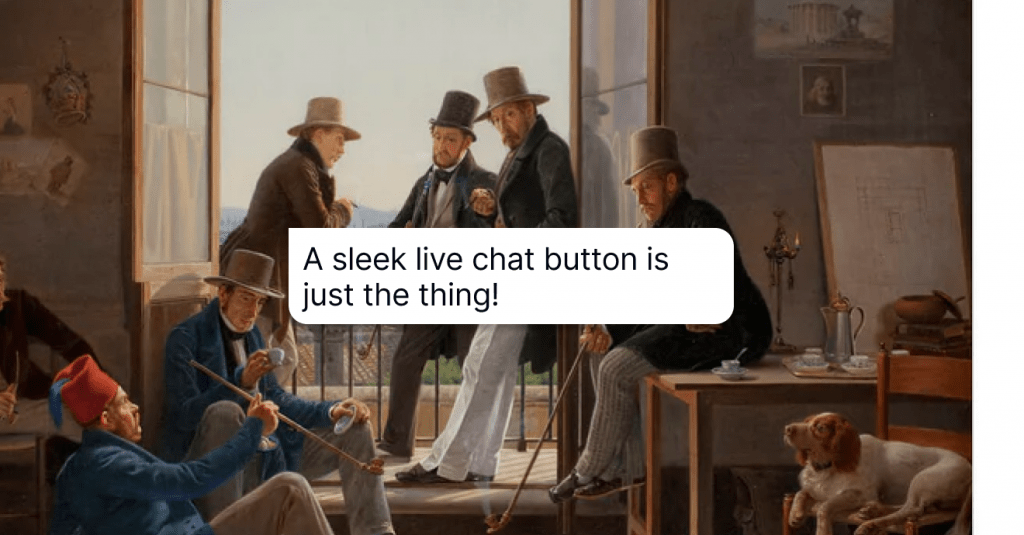Omnichannel vs. Multichannel: Explaining the Key Differences
We are here to cut to the chase and explain the key differences between multichannel and omnichannel strategies in marketing and customer service. Read the article for the full disclosure!
Written by Tetiana Shataieva

So you find yourself in front of these two buzzwords — omnichannel vs multichannel — and wonder about the differences. You probably wonder: what approach is the best for your company to hit the jackpot? Well, it’s time to clear the air between those two and reveal the truth. No more confusion.
Firstly, let’s put the record straight and define what we actually mean by the word ‘channel’ (not Chanel 🛍️, unfortunately). Here, we talk about a medium through which a brand is able to communicate with its customers.
Secondly, in this context, mediums can be of two kinds: marketing and support. From the marketing perspective, a channel could be anything from the product’s packaging, physical stores to a brand’s website, social media profiles, or a billboard. In terms of customer support, a channel could be anything from emails to phone calls, messenger apps, live chat, or video calling.
Throughout this text, I’ll cover both aspects and demonstrate the differences in specific examples. Moving towards the end of the article, we will try to decide which strategy, omnichannel vs multichannel, suits your brand better.
Shall we start?
What is multichannel?
A multichannel strategy means that a brand uses various channels to spread the message about its product and, thus, increase customer engagement. The channels are generally unconnected and don’t coordinate with one another. It’s an effective way to reach more users with your offer and let as many people know as possible about your brand.
However, the definition doesn’t end there. Since the channels are not necessarily integrated, there can be two scenarios from here.
- Each medium can have its own mission, work independently, and offer a separate interaction opportunity.
- All channels can work for the same goal of spreading one specific general message, not personalized or aligned with the needs of target subgroups.
In both scenarios, the brand places its message in the center of interplay with clients, not taking their individual expectations into account. And the only thing that matters in this approach is bringing a specific piece of information to the maximum number of users.
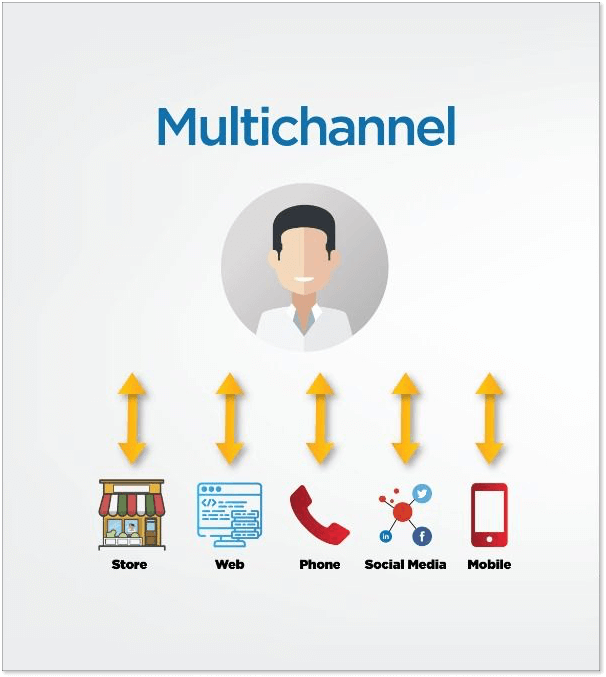
If you wonder, how multichannel looks in customer service, then picture this: a company has multiple channels that are not synced with each other. Consequently, when a user texts on Instagram to report an issue, they would most probably need to repeat the whole story all over if they switch to a phone/live chat/email support channel.
What is omnichannel?
An omnichannel strategy is also about leveraging multiple channels for communication with users. But what makes it a different notion is that all these channels are integrated with each other and create a seamless customer experience.
In the omnichannel communication practice, you will find a customer who is put at the center of all interactions. It’s them who decide which channel to use for whatever reason. And you as a brand must ensure uninterrupted communication across all mediums.
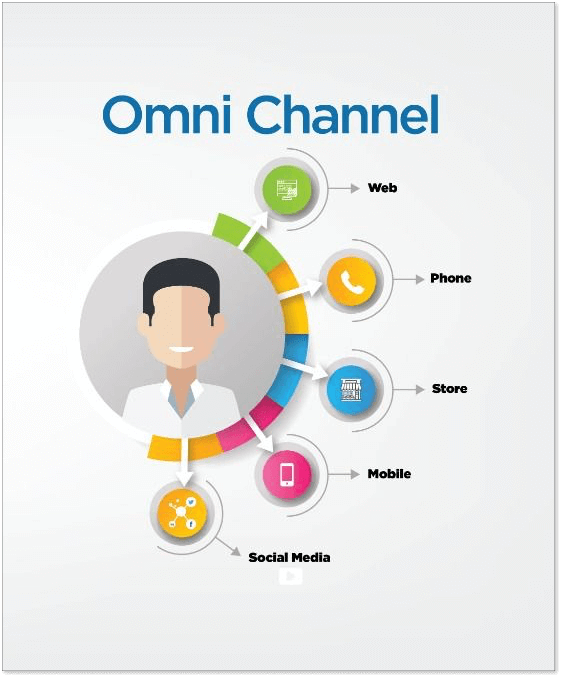
From a business perspective, it also means that your message must be consistent everywhere you show off. For example, you can’t offer a 20% discount for website users but a 10% off for Instagram fans. This would be something absolutely unacceptable and a huge scandal.
Another example of the omnichannel approach is when a user submits a request via live chat and then keeps on the conversation in Facebook Messenger with no additional questions asked. Support agents have all communication history with each user at the tip of their fingers thanks to dedicated software.
Briefly speaking, in the omnichannel approach, all channels serve the same mission, providing a unified offer, and assisting customers equally.
What are the real differences between omnichannel vs multichannel?
Although you already know the basic difference between omnichannel and multichannel, there is still a lot to discover. Let me introduce you to the main aspects that differentiate an omnichannel from a multichannel approach when interacting with customers.
| Omnichannel strategy | Multichannel strategy |
| Customer and their needs are at the center of all interactions | Brand, its message, and the communication channel are at the center of all interactions |
| It aims to improve customer experience and strengthen relationships with clients | Strives to reach as many prospects as possible to enhance customer engagement |
| Builds its activities upon users’ behavior data, individual needs, and expectations of certain customer categories | Relies on general call-to-action messages to grab the attention of the maximal number of users. |
| Numerous interaction channels integrated with one another | Many separated channels to communicate with customers independently |
Now, let’s discuss some of them more precisely.
1. Omnichannel is more customer-oriented, and multichannel is more brand-focused
An omnichannel communication builds upon specific data from customer behavior such as interests, preferences, and favorite interaction channels. This whole data-driven marketing strategy strives to align all interaction activities with the customer’s expectations. As a result, the brand is able to enhance the user’s connection to the company and create strong customer relationships.
When a company goes multichannel, it focuses on its product/offer and tries to reach out to prospects everywhere they can possibly be. The focal point is mainly on increasing the digital presence and attracting new leads, rather than deepening their customer relationships.
2. Omnichannel prioritizes customer experience, whereas multichannel focuses on customer engagement
The previous paragraph ties in with the next key difference: an omnichannel approach strives to polish customer experience, and a multichannel strategy aims to improve customer engagement.
So, omnichannel is about creating a consistent customer experience. The end goal of an omnichannel approach isn’t about increasing the number of eyeballs your brand gets, it’s about engaging with the people who are already interacting with you. And all of that is to make sure they get a seamless and consistent customer experience, regardless of what channel they’re using.
On the other hand, the main purpose of a multichannel approach is to cast the net as far and wide as possible to maximize the number of people who can come into contact with the brand. That is why one of the key metrics of a multichannel approach is customer engagement. For example, on a social media channel, the main aim from a multichannel perspective would be to increase followers’ likes, comments, and shares.
3. Omnichannel provides a personalized experience, and multichannel offers a general approach to all clients
The multichannel approach mostly relies on call-to-action links, buttons, and messages to encourage users to take a specific action. However, such slogans are often quite generic, with limited or almost no personalization, which negatively affects their effectiveness.
Omnichannel leverages the users’ data. Here, all communication mediums work towards collecting information about customers’ behavior to understand different groups of clients better.
Once a business has insights into users’ requirements and expectations, it can categorize them by country, lifestyle, preferences, and pain points to provide a personalized experience. And when a prospect feels your attention to their individual needs, they engage more, buy more, and become loyal to your brand.
On top of that, the data you gather across different communication channels allows you to see the whole picture. More importantly, it enables you to identify factors like why your sales are dropping (God forbid), users ignoring your proactive message, or certain individuals abandoning your cart or app. Equipped with these insights, you can hyper-personalize your marketing and communication strategy to cater to your client’s taste.
Omnichannel vs. multichannel examples in e-commerce
In the context of omnichannel and multichannel marketing in e-commerce, an omnichannel approach is designed to make the shopping experience as effortless and easy as possible. It removes the friction from moving across different touchpoints, making it easier for the customer to complete their journey.
A great example would be the Starbucks approach. If you have a quick look at their reward app, you will see how effortless for users it is to check and reload their benefit cards via phone, website, in-store, or on the app. When there is any change to the card or your profile, it gets updated across all channels, in real-time.

On top of that, the linked app also allows coffee lovers to:
- Send gifts
- Find stores nearby
- Order drinks ahead of time
- Double-check what songs are playing in a specific store (possible thanks to Spotify integration)
In short, omnichannel experience is about removing any unnecessary effort from a user’s experience rather than adding to it.
On the contrary, multichannel prioritizes customer engagement and sales by leveraging as many channels as possible, creating independent sales points. Brands sell their products directly to consumers and vendors that create other points of sale in-person and online.
The objective here is to provide clients with more ways to research and purchase the product. People appreciate the flexibility and can pick the way that is the most convenient for them.
For example, online mattress store Leesa sells products via its website, Amazon, social media, and third-party vendors. Each channel exists as a separate purchase opportunity, which gives customers a disconnected experience while they move across multiple channels and get closer to a purchasing decision.
Leesa’s store on the website:
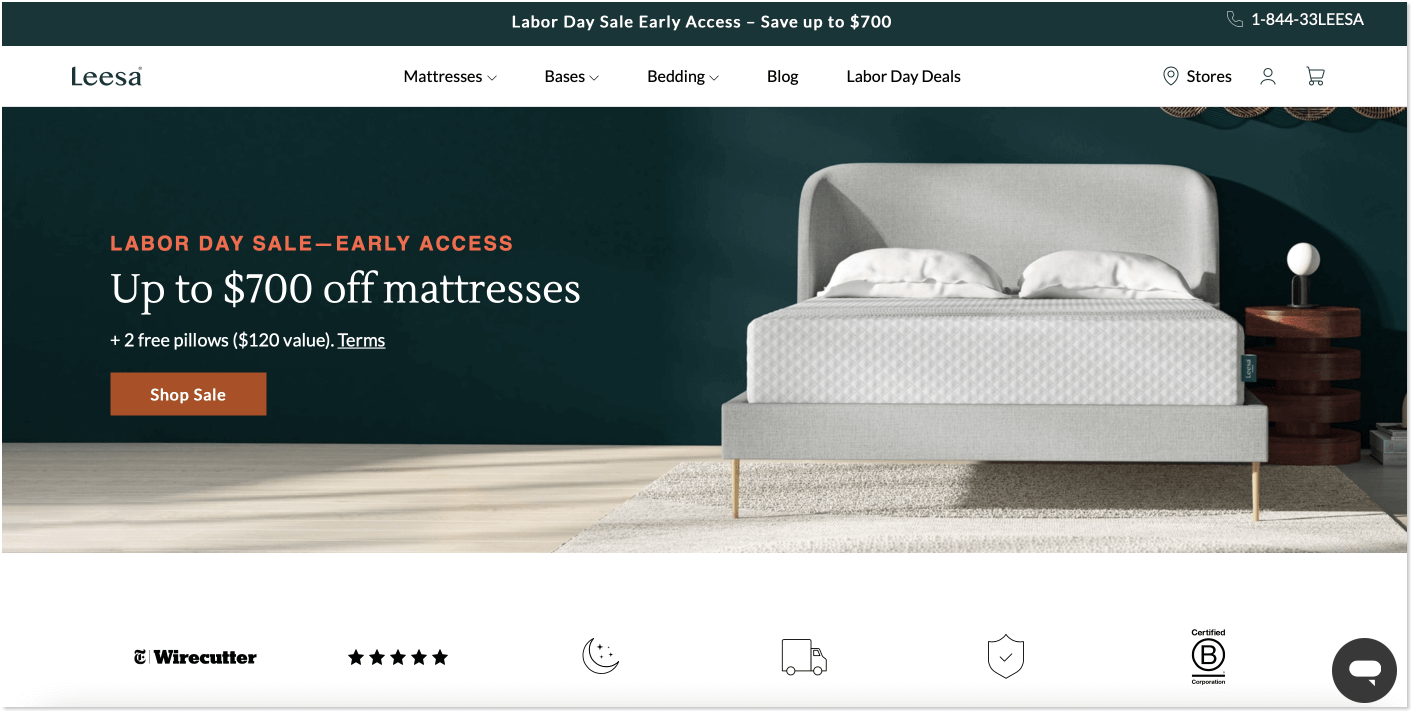
Leesa’s store on Amazon:

Leesa’s store on Instagram:
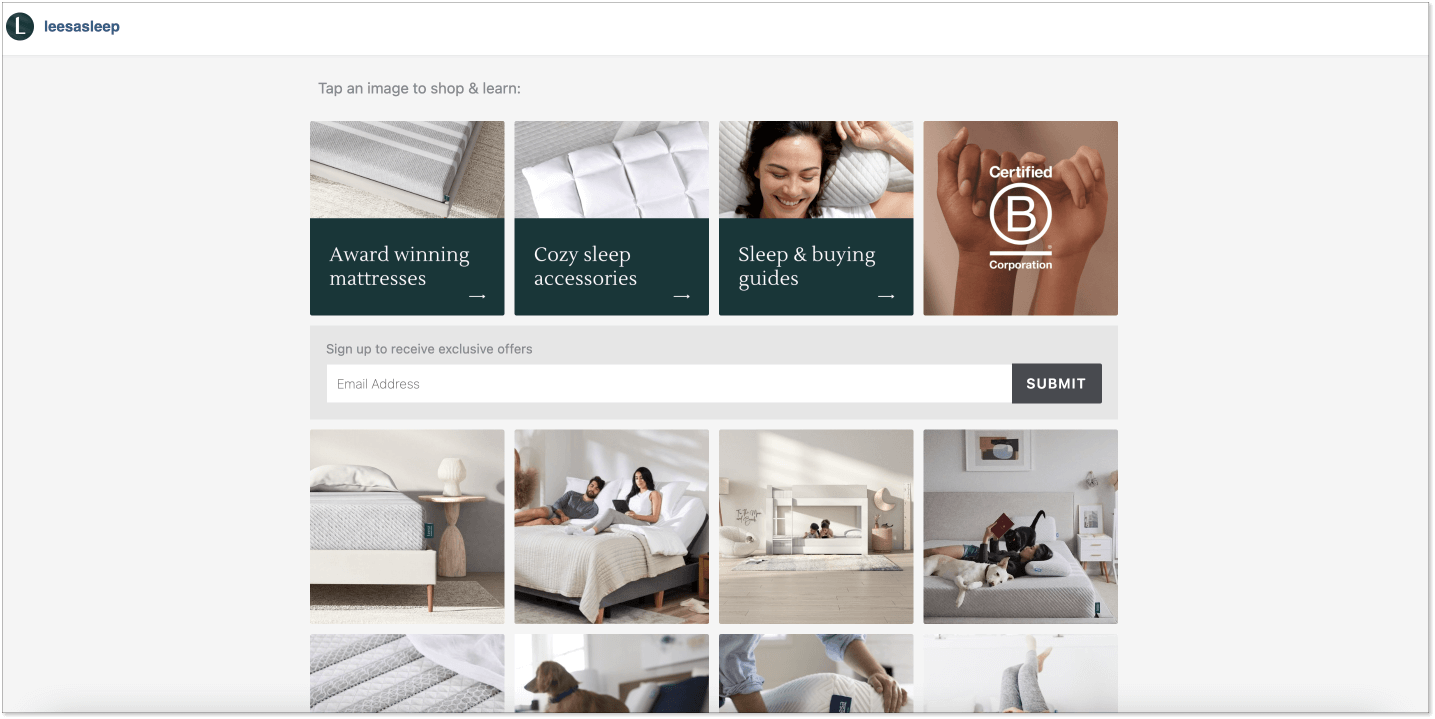
You can notice that even the page design and information on them are different which multiplies the chances to cater to the needs of different platform users (website, social media, Amazon, etc.). So, in short, their main goal is to be where prospects are and encourage them to make a purchase.
Omnichannel vs. multichannel customer support
Now let’s see how it all applies to customer support at retail/e-commerce/SaaS companies.
In an omnichannel customer service strategy, the customer would be able to choose from whichever channel they prefer and know that the quality of the support would be the same across all channels.
For example, a customer can send an email on Monday, get a text on Facebook Messenger on Tuesday, and pick up the order in a brick-and-mortar store on Wednesday. The context will be preserved across all channels to create a seamless experience. It is possible thanks to dedicated customer communication software that stores all data and chat history across all channels for each user.
Amazon is the king of omnichannel customer support. Its app and website automatically sync users’ carts when clients are signed in, allowing for better customer service. This way, the e-commerce giant knows about every purchase that customers have ever made and can build interactions and suggestions based on that information.
Right in the app, a user can manage their orders (as all data is synchronized), resolve other issues, browse knowledge base articles, or contact a support agent.
A multichannel approach here would again simply refer to the number of channels available to the customer that are not obligatory connected.
For example, a customer might choose to email a support agent to report an issue. If after that they want to start a new conversation over live chat, chances are they would have to repeat the whole point all over again. That happens when multiple support channels are not synchronized.
Fortunately, in today’s world, you will rarely find a company that doesn’t coordinate its customer service channels. Imagine a user repeating its requests again and again on every channel, that would be a disaster. 33% of customers are most frustrated by this exact factor!
Multichannel vs. omnichannel: how to make the right decision?
On the face of it, omnichannel seems like a much better choice that offers an effortless and seamless customer experience on top of a vast selection of channels. But if only it would be that easy. In fact, you can find success with both approaches. Moreover, some tactics might fit you better than others at a specific period of time.
Go with multichannel if…
You’re at the early stage of your business development and can’t boast of a huge budget just yet. Most probably, your main goal now is to attract the mountain of eyeballs who should learn about your irresistible offer. By appearing on many platforms, you will be able to let people know that you are here and what benefits your offer brings. It’s more than enough to get the ball rolling.
The primary advantage is that it costs much less and doesn’t require as much effort. Start with creating an account on social media, and sharing your company email and phone number. Although these channels won’t be connected in the first place, they will allow customers to reach out to you easily via their favorite medium.
Go with omnichannel if…
Your business prioritizes strong customer relationships at this point. Go omnichannel when reaching the myriad of prospects is not as important as granular targeting of clearly defined leads.
While it’s true that going omnichannel requires significant resources like time and money, the payoff of a successful omnichannel approach is more than worth it. From plain sailing user experience and improved customer retention to cut above sales and greater brand loyalty, an omnichannel strategy is the best solution if you’re prepared to do the work.
How to adapt multichannel marketing?
Multichannel marketing means that you transmit your message across more than one channel. For instance, there could be digital channels like websites, social media, newsletters, mobile notifications, automated messages, or offline mediums like banners, catalogs, packaging, and special promotions in-store. Your customers require various channels to interact with you online and offline.
So, the first step would be to build a single view of the customer. This way you can picture your general target audience, learn their preferences and cater to their needs. Even though we are talking about multichannel marketing here, you still need to understand and personalize your strategy according to the needs of your average lead.
Then create a few communication channels based on the preferences of your average buyer persona. Once you have multiple channels created, you can track users’ behavior, interactions, purchases, and customer feedback per different mediums.
Third, apply what you found to your ongoing customer engagement strategy. To be more precise, use those marketing channels to lure more prospects into your net. Adjust the tone of your message, so it correlates with your customers, make an accent on clients’ pain points, and focus on the benefits users can get from your offer.
Third, keep monitoring the results of your activities via various marketing channels. It’s okay when something used to work tremendously for you in the past, but then it stopped.
Prospects, like all of us, change, grow over time, shift their values and interests, and your brand should respond to those changes. Remember that the ultimate goal in a multichannel approach is to catch more leads and move them through your sales funnel as effectively as possible.
How to build an omnichannel strategy?
An omnichannel strategy implies the usage of two or more channels integrated with each other to improve customer experience and deepen relationships with clients. In the end, it leads to increased sales and improved customer retention. Consumers can purchase online or in a physical store but what matters the most, all communication channels are linked together, creating a consistent brand experience.
First and foremost, understand your audience and how they interact with you. Only this time, try not to limit yourself to one general buyer persona and be granular when describing each group/subgroup of your target audience. Gender, age, occupation, location, preferred channels of communication, current needs and interests – all things matter.
One way to accumulate customer data is by surveying people. Another way is by following your competitors’ example or analyzing the behavioral patterns in digital communication tools.
The next step includes leveraging the data you collected in the first step and putting it into practice. How? Diversify online channels for interaction with clients, keeping in mind the needs of your potential customers.
Don’t be afraid to overdo it, as most customers do have many touchpoints until they make it to the purchase — Google, social media, online marketplaces such as Etsy and Amazon, a myriad of forums to learn other customers’ feedback, your own website, in-store experience, etc. Try to be present wherever your client’s journey lies.
While you create an omnichannel marketing strategy, remember to keep a consistent customer experience. Keep in mind, that as customers navigate between channels, they expect to encounter similar branding, tone of voice, pricing, and customer support.
In the third step, it’s crucial to monitor the effectiveness of your omnichannel strategy. Did your customer experience improve? Are your users happy? Is there anything keeping your customers’ journey less smooth than it could be? So keep abreast and make changes to your strategy as needed.
Final thoughts
If you want me to squeeze the juice of the multichannel vs omnichannel battle, here it goes: multichannel includes various mediums to communicate with clients; omnichannel does the same, except these channels are integrated with each other. The end! 🎭
OK, a few more words. To attract customers, use a multichannel approach. To improve customer experience and build strong relationships with users, go omnichannel.
And once you decide on the right approach for your business, it’s essential to find customer communication software that allows you to implement it the right way. HelpCrunch has been designed as a tool to build strong customer relationships and offer a seamless user experience across different interaction channels.
Start your journey into omnichannel with HelpCrunch by signing up for a 14-day free trial today.

